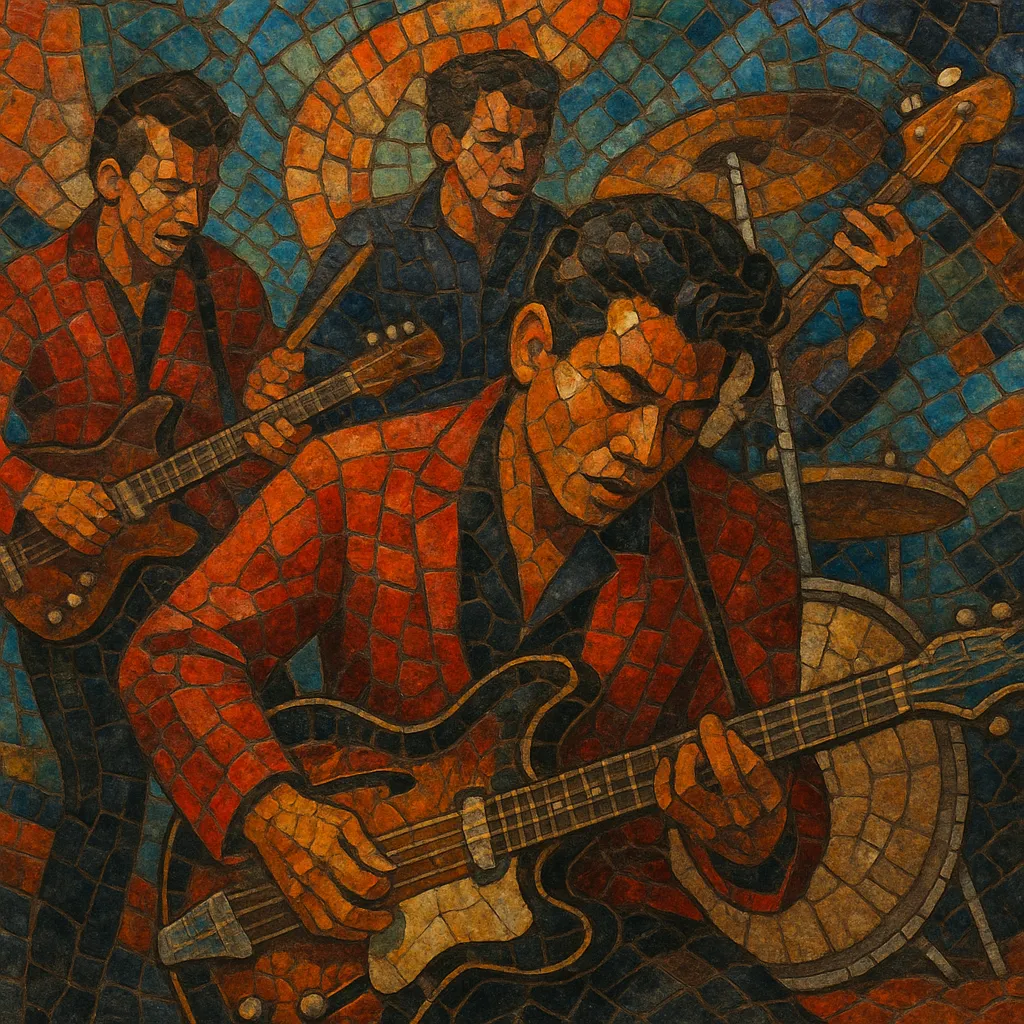Indorock is a high‑energy, guitar‑driven style that emerged in the Netherlands in the late 1950s, created by Indo (Eurasian Indonesian) musicians who blended American rock ’n’ roll with Indonesian/Moluccan musical sensibilities and Hawaiian steel‑guitar traditions.
It is characterized by virtuosic lead guitar (tremolo picking, rapid single‑note runs, whammy‑bar dives), strong backbeat drumming, walking or slapping electric bass, and frequent instrumental showcases. Repertoires often mix rocked‑up standards, original instrumentals, and romantic ballads, with occasional rhythmic or melodic inflections drawn from kroncong and Hawaiian styles.
Onstage, Indorock was known for flamboyant showmanship—acrobatic guitar moves, dynamic volume swells, and tight ensemble precision—helping ignite the broader Dutch guitar band boom that preceded the British Invasion on the Continent.
After Indonesian independence, large numbers of Indo (Eurasian) families resettled in the Netherlands. Young musicians brought with them a love of Hawaiian guitar music and kroncong, and quickly embraced imported American rhythm & blues and early rock ’n’ roll. By the mid‑to‑late 1950s, pioneering groups—most famously The Tielman Brothers—were electrifying Dutch clubs with an unprecedented mix of speed, precision, and stage bravura that came to be dubbed “Indorock.”
Indorock bands toured Germany’s club circuits (including the same Reeperbahn venues later frequented by British beat groups), recorded singles, and built a reputation for explosive live shows. Their twangy lead guitars, heavy reverb, and showmanship helped catalyze a wider Dutch/European guitar‑band wave, inspiring countless local combos and laying groundwork for the Hague scene.
The arrival of British beat and pop rapidly shifted audience taste. While some Indorock musicians adapted to beat and later pop trends, the core style receded from mainstream charts. Nonetheless, its technical guitar language and bandcraft fed directly into Dutch rock’s next phases.
From the 1970s onward, reissues, reunion concerts, and documentary projects rekindled interest. Music historians now recognize Indorock as a vital, transnational bridge—connecting Indonesian/Moluccan traditions, Hawaiian steel‑guitar aesthetics, and American rock ’n’ roll—while prefiguring Europe’s surf‑tinged instrumental rock and the broader Dutch rock identity.


